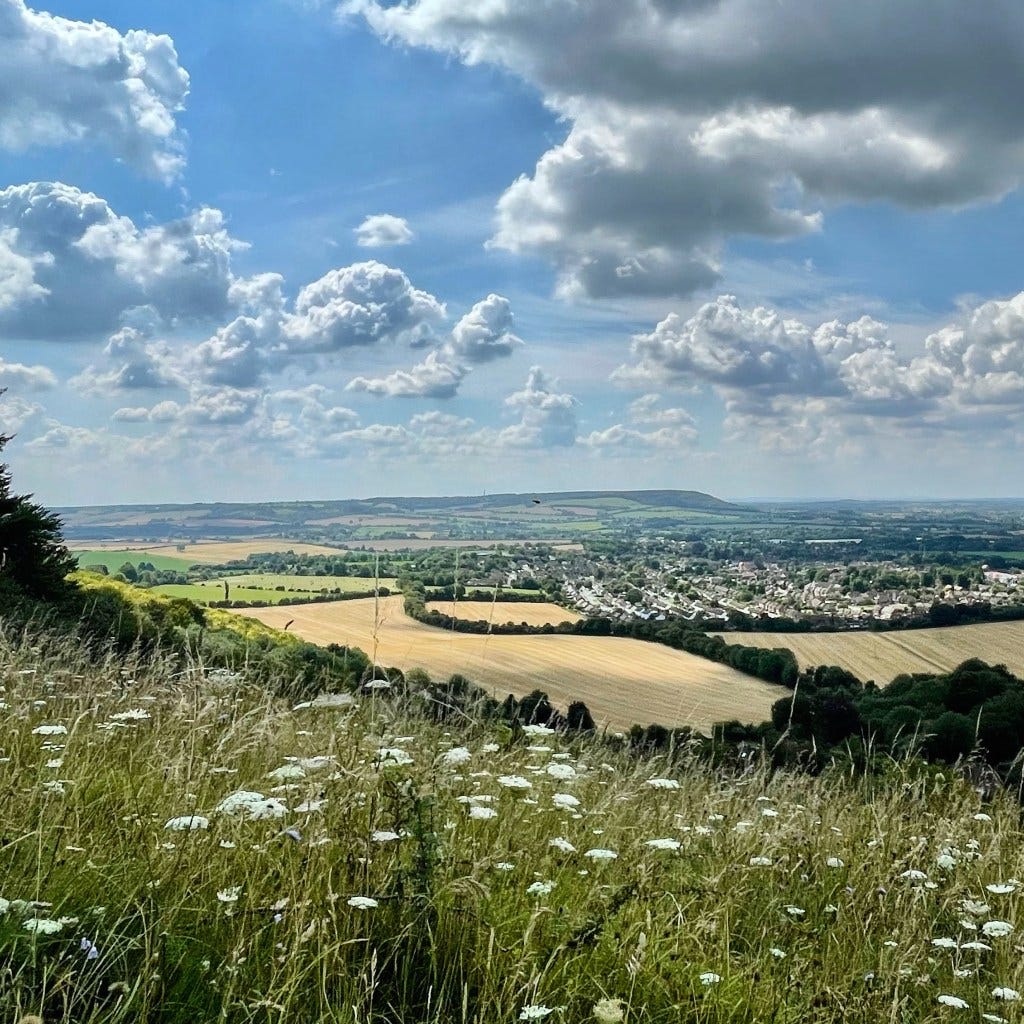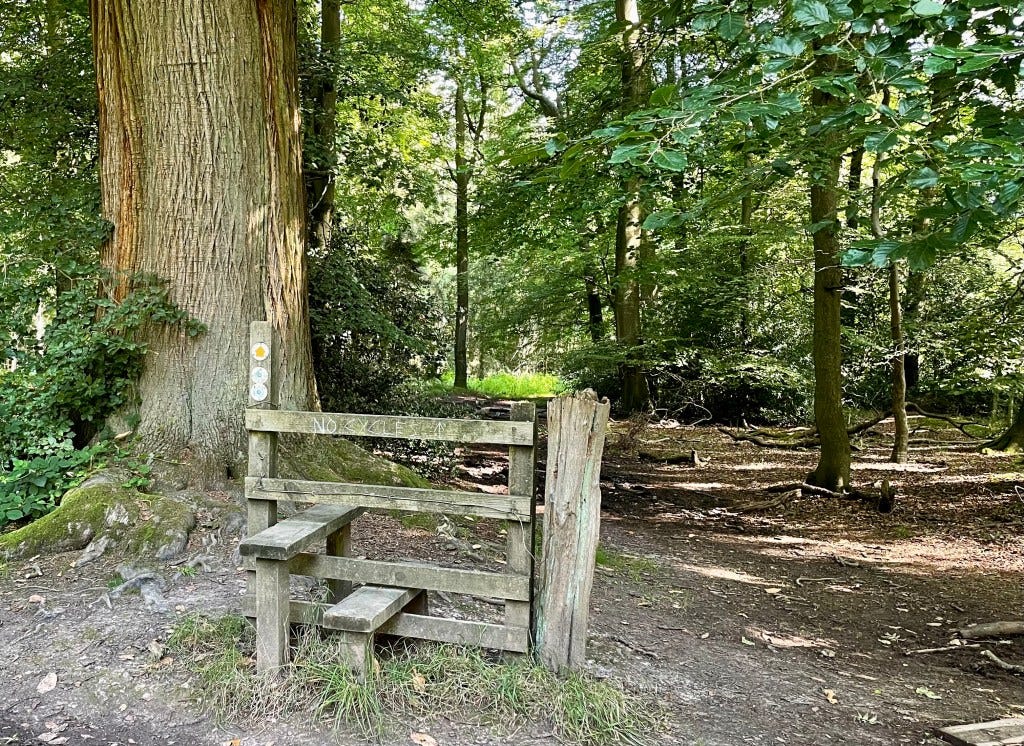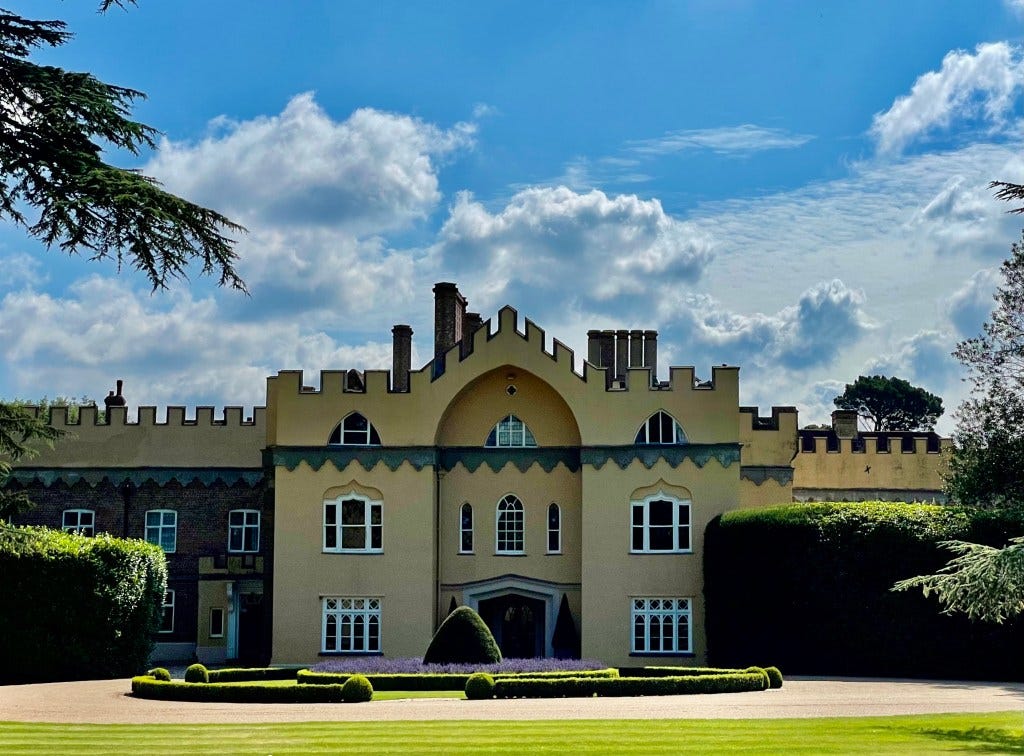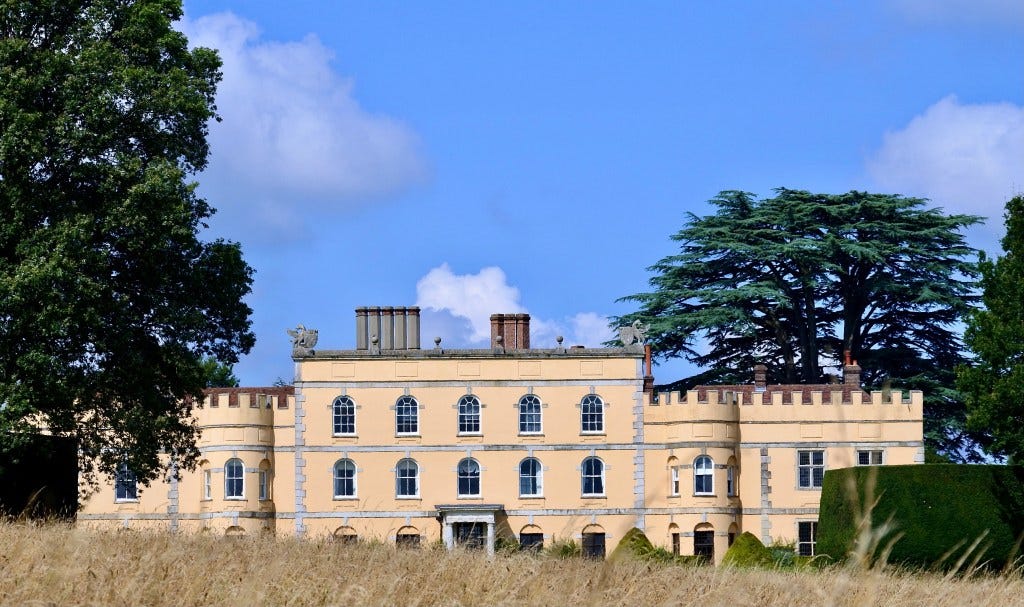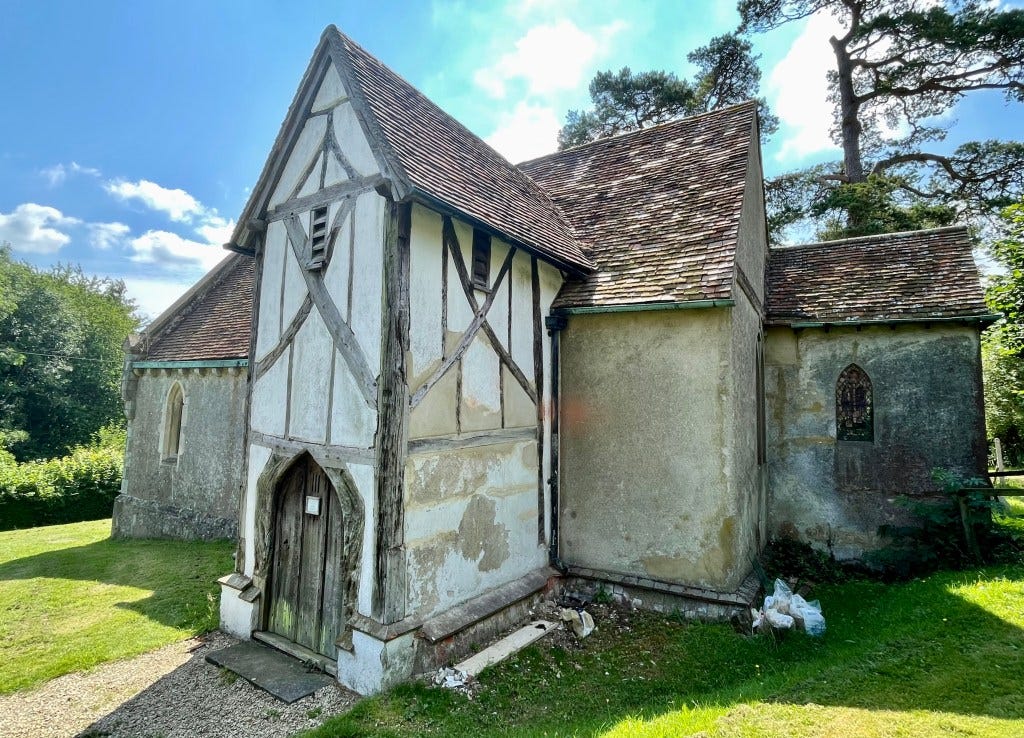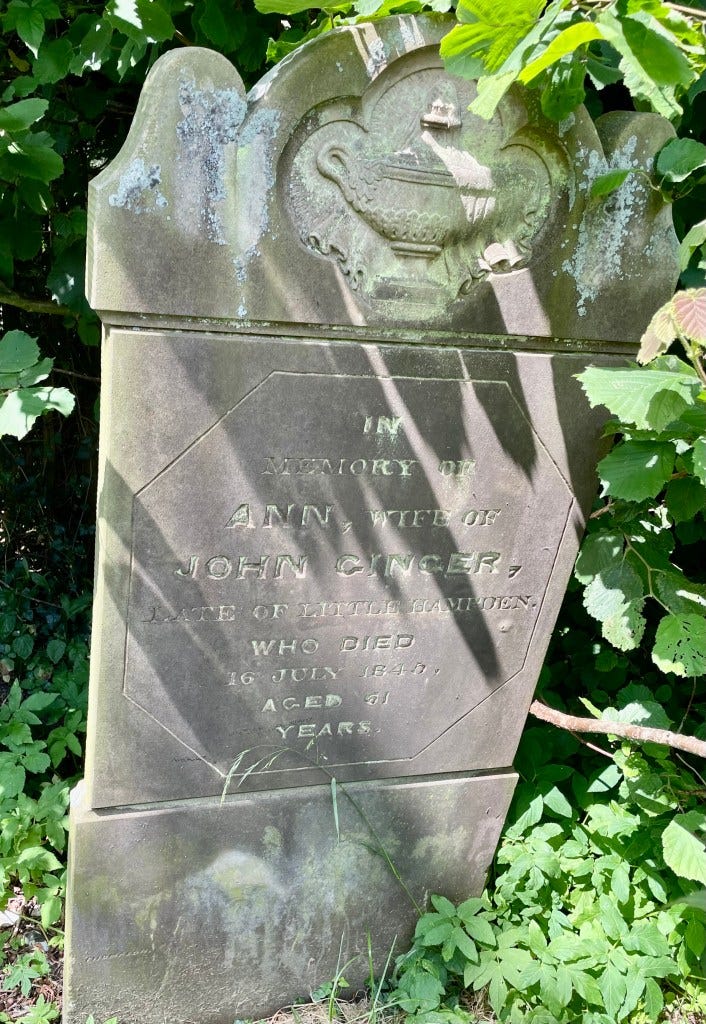The Hampdens
Not the Hamptons, but a tucked-away Buckinghamshire parish about three miles south east of Princes Risborough. It incorporates the villages of Great Hampden and Little Hampden and hamlets of Green Valley and Hampden Row.
Due to difficult geography, no major roads or rail links ripped through this countryside.
You’ll find instead deer, the tips of hares, countless butterflies, dozing horses and dappled footpaths through beech woods in an historic landscape. Churches, farms, a manor house and memorials to old family names and their legends.
Classic Chilterns
Setting off from the mysterious Whiteleaf Cross on the hillside above Princes Risborough, we followed one of the very good National Trust countryside Trails that leads from the familiar into the pleasing unfamiliar.
Leaving an overgrown Whiteleaf Cross at the WW1 trenches, apart from some dog walkers, we had the route to ourselves. A beautiful August day, we passed through Kingsfield Wood and walked parallel to a Grim’s Ditch Iron Age earthwork. A feature of the Chilterns, I’ve heard many theories about who it was meant to keep in or out: cattle or the Danes?
Hampden House
The 400-year old cedar tree hinted at our approach to Hampden House. The Gothic-style battlements and arch windows resemble an overblown wedding cake. Perhaps an influencing factor when the current owners bought the house from the family in 1985 to market as a wedding venue. They refurbished a structure that had seen wear and tear as a girls school and latterly as the location for the Hammer film company who churned out horror films and TV series in the 1980’s. An extraordinary sight in this quiet valley.
Once home to the Hampdens (later the Earls of Buckinghamshire), who lived here continuously from before the Normans right up until 1938. Imagine that!
A famous son of this valley (who has a statue in Aylesbury), is commemorated across the county, is John Hampden. Notorious for his refusal to pay 20 shillings for the dodgy ship-money tax, brought in by a near bankrupt King Charles 1 in 1637. This indirectly led to the Civil War and his death at Chalgrove Field near Thame. St Mary Magdalene church doubtless has a rich heritage inside, but is still under Covid-restricted opening hours and was closed.
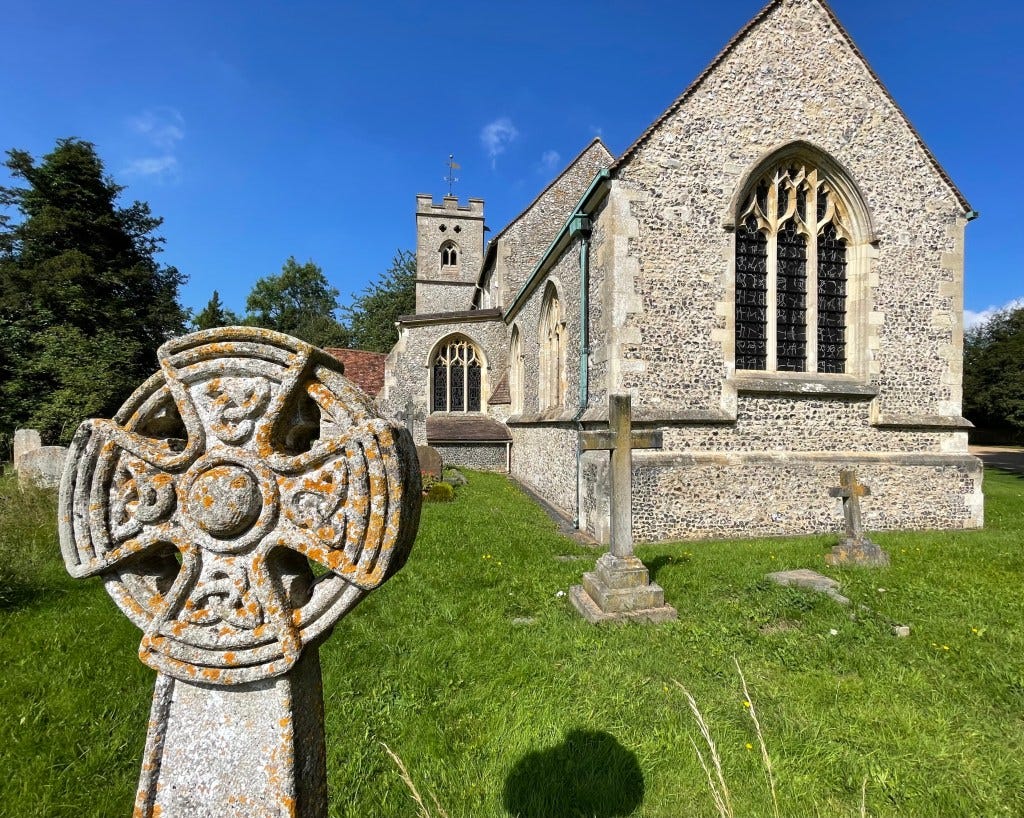
We continued our walk down an avenue of lime, plane and horse chestnut trees that must have shaded many a visitor over the years. We did as instructed and pushed the button on the large gate and turned to cross the hot fields, alive with butterflies and the scraping of crickets. I love that high summer sound.
We spotted deer jumping over the wheat, making it look so easy. Rabbits and probably hares too as we climbed up through Warren wood towards the isolated hamlet of Little Hampden and our second local family.
Little Hampden Church
This gem of a church is tiny, and looks quite fragile. Yet it has survived the rigours of the Reformation and a Victorian make-over. The church is of course locked, and access has to be arranged to see the medieval wall paintings and alter stone.
The 15th century porch has two storeys, the upper one housing a bell, cast in 1791 that is once again working, the locals vying for the privilege of ringing it across the valley.
Memorial stained glass window
Through a crack in the door
The beautiful, sturdy entrance
The Gingers
Not only is the building spectacular, the graveyard is too. Surprisingly large, with an uneven surface, evidence of long-forgotten burials. I was drawn to a headstone, tucked away at the boundary and noticed the unusual surname.
“The Yeomanry family of Ginger constantly resident here, during more than two hundred years; as the principal tenants and occupiers of the land, have obtained some celebrity, on account of the great age to which some of them attained, ….that the head of each of four generations, had arrived at the age of upwards of ninety years.” [The History and Antiquities of the County of Buckingham, by George Lipscomb, 1847].
I found further evidence of the Ginger generations on the Ancestry genealogy website, including an incident of stock theft and a funeral. I wonder if there are Gingers still living in the area?
What a walk! Eight miles packed with nuanced history, places, people, outlandish buildings and beautiful scenery. Tucked away in a quiet corner of Buckinghamshire, this really is classic, unexpected Chilterns.
Further Information
There are several circular walks from Whiteleaf, including a spell on the Ridgeway National Trail.
You’ll find another link with the Civil War in the Buckinghamshire hamlet of Dinton. A heady mix of local legend, the shadow of a ghost, a hermit and a royal executioner.
There are plenty of other delightful Chilterns churches to visit across the seasons.
Celebrate the seasons in the Chiltern Hills with a NEW range of beautifully designed gifts and souvenirs from Chilterns Gifts.
The post The Hampdens appeared first on Chiltern Hills.



